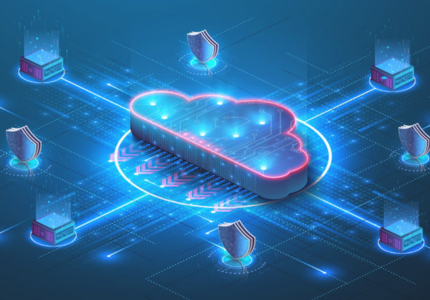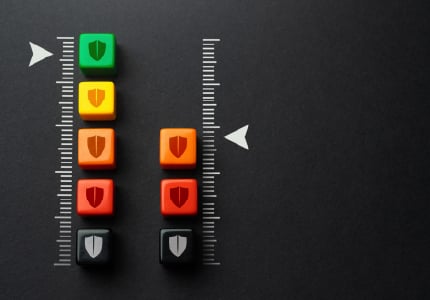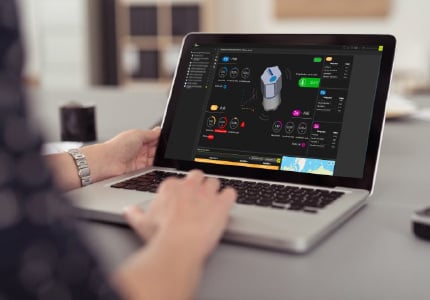
09.10.2025
SGP.32 eSIM: Sådan får du succes med næste generation af IoT-forbindelser
Opdag, hvordan SGP.32 eSIM forenkler IoT-tilslutning. Lær om fordelene, hvordan det fungerer, og hvorfor et samarbejde med en tjenesteudbyder sikrer succes.

09.10.2025
Opdag, hvordan SGP.32 eSIM forenkler IoT-tilslutning. Lær om fordelene, hvordan det fungerer, og hvorfor et samarbejde med en tjenesteudbyder sikrer succes.

07.10.2025
Maksimer IoT's oppetid med 7 avancerede tips om SIM, netværk, sikkerhed og support for at opbygge robust, sikker og højtilgængelig IoT.

04.09.2025
Fremskynd udviklingen af IoT-apps med no-code/low-code-værktøjer - reducer tiden til markedet, reducer omkostningerne, og frigør dataindsigt uden kodningsfærdigheder.

02.09.2025
8-trins guide til genoprettelse af IoT-nedbrud for at reducere nedetid, beskytte data og forbedre modstandsdygtigheden i forbundne enheder.

17.08.2025
Sikre IoT fra SIM til cloud med on-SIM-teknologi, der reducerer risikoen, forenkler implementeringen og beskytter følsomme data mod nye cybertrusler.

12.08.2025
Wireless Logic driver IoT-innovation med værdiskabende løsninger, der hjælper kunder med globale tilslutningsudfordringer i en branche i hastig forandring.

06.08.2025
Stil disse 12 vigtige spørgsmål for at finde en sikker, skalerbar og pålidelig leverandør af IoT-løsninger, der kan sikre succes og modstandsdygtighed på lang sigt.

14.07.2025
Udforsk global IoT-lovgivning, standarder og bedste praksis for at opbygge modstandsdygtige, sikre løsninger, der overholder reglerne, beskytter data og minimerer nedetid.

29.06.2025
Opdag fire hovedårsager til IoT-afbrydelser som strømsvigt og cyberangreb, og lær, hvordan du reducerer nedetid med Wireless Logics ekspertguide.

21.06.2025
Opdag de vigtigste funktioner, der skal prioriteres i IoT-enheder for modstandsdygtighed, sikkerhed og ydeevne - din guide til at bygge robuste, fremtidssikrede løsninger.

18.05.2025
Opdag, hvordan IoT og styret konnektivitet hjælper landbrugsvirksomheder med at beskytte bestøvere, øge modstandsdygtigheden og opfylde ESG-mål på en bæredygtig måde.

01.05.2025
Lær, hvordan EN 18031 og den britiske CS&R-lov ændrer IoT-sikkerhedsstandarder, og hvordan Wireless Logic hjælper med at sikre overholdelse og markedsparathed.

21.01.2025
IoT-væksten i 2025 vil blive formet af AI, eSIM-anvendelse, netværksnedlukninger og skiftende behov for tilslutningsmuligheder. Virksomheder skal planlægge for fremtiden.

11.01.2025
Wireless Logic og Kaleido Intelligence undersøgte 1.000 virksomheder og afslørede efterspørgslen efter fleksible IoT-forbindelser, forbedret sikkerhed og værktøjer med lav kode.

12.12.2024
eSIM og iSIM tilbyder sikker, softwaredefineret tilslutning, mens SoftSIM mangler hardwaresikkerhed. Find ud af, hvorfor GSMA og operatørerne foretrækker hardwarebaserede løsninger.

03.12.2024
IoT forandrer sundhedsvæsenet med sikre, pålidelige forbindelser til digitale løsninger, fjernovervågning, AI og effektivitetsdrevne innovationer.

04.11.2024
Anvendelsen af eSIM vil vokse med SGP.32 og muliggøre global IoT-implementering med fleksibilitet, fjernforsyning og forenklet logistik.

23.10.2024
IoT automatiserer tidsjusteringer, optimerer energiforbruget og strømliner planlægningen ved skift til sommertid, hvilket sikrer effektivitet og sikkerhed.

22.10.2024
Fixed Wireless Access (FWA) med 4G, 5G og Starlink giver hurtig og pålidelig forbindelse til virksomheder, reducerer omkostningerne og muliggør IoT i fjerntliggende områder.

23.09.2024
IoT revolutionerer turismen med intelligente hoteller, bagagesporing, AI-drevet information og interaktive oplevelser, der gør rejser mere sømløse og personlige.

11.07.2024
Tingenes internet (IoT) er fortsat på forkant med den teknologiske innovation, men mange virksomheder rapporterer om udfordringer, som hæmmer deres fremskridt.

06.02.2024
I en tid, hvor M2M/IoT bliver stadig mere integrerede i vores daglige systemer, bør valg af SIM leverandør være en essentiel.

24.11.2023
Udforsk, hvordan IoT styrker leveringschauffører, især under juleopbygningen og i kølvandet på Black Friday og Cyber Monday.

13.11.2023
I forsyningsindustrien skal man forholde sig til de nye krav i NIS2 og den kommende Cyber-Resilience-Act.

07.11.2023
Vi er i gang med at forberede sig på det kommende EU-direktiv NIS2, der skal løfte den europæiske IT-sikkerhed op på et nyt niveau.

28.03.2023
Opladning af elbiler er afhængig af en smart og robust energiinfrastruktur. IoT gør det muligt at overvåge, optimere kapaciteten og vedligeholde elbilnetværk effektivt.

14.03.2023
For andet år i træk er Wireless Logic udnævnt til leder i Gartner Magic Quadrant for Managed IoT Connectivity Services, Worldwide.

25.07.2021
4G-forbindelse forbedrer kliniske forsøg med sikker dataindsamling, der altid er tændt, og forbedrer nøjagtigheden, fastholdelsen af patienter og effektiviteten af fjernovervågning.